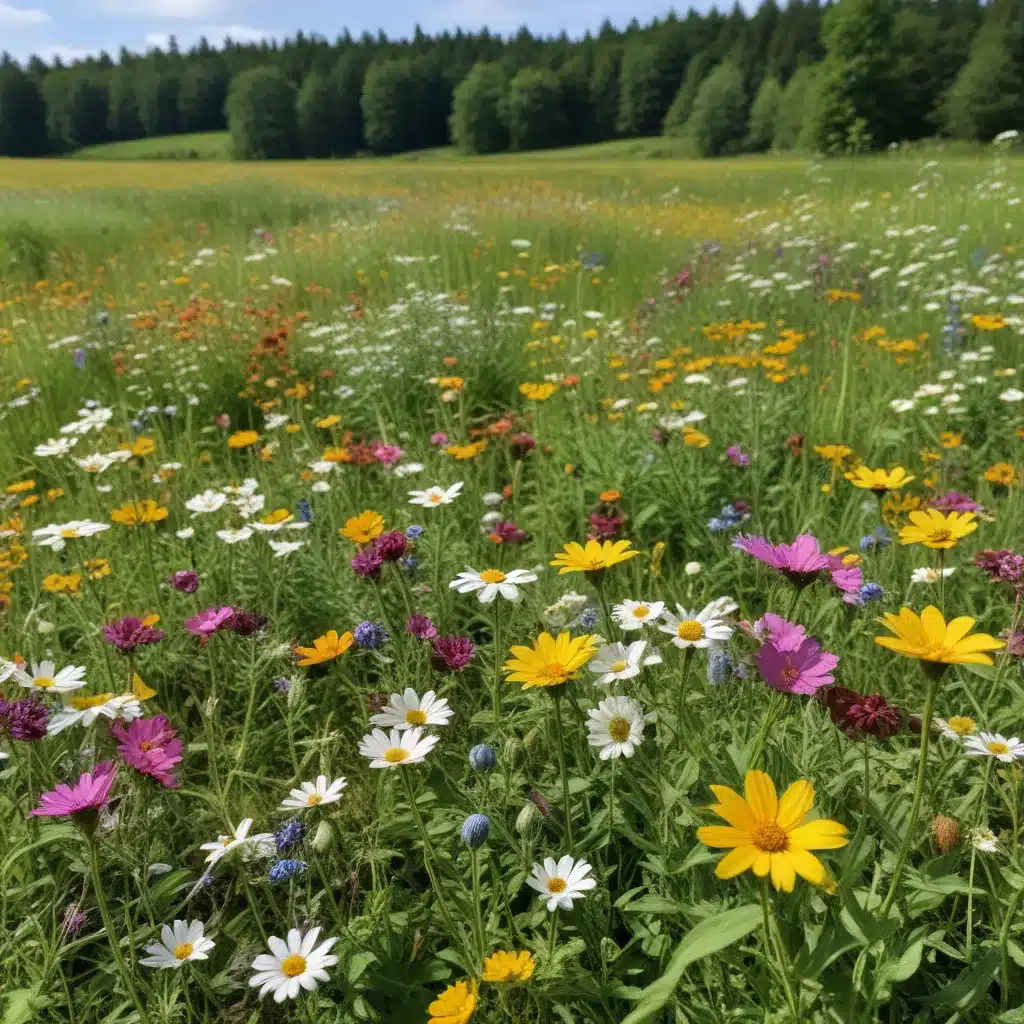
The Wonders of Wildflowers: Cultivating a Meadow on Your Farm
Have you ever strolled through a lush, vibrant meadow, surrounded by the sights and sounds of nature? The gentle swaying of grasses, the kaleidoscope of blooming flowers, and the buzzing of pollinators create a truly captivating environment. At Crooked Pines Farm, we believe that cultivating a wildflower meadow can be a transformative experience, not just for your family but for the entire ecosystem.
Appreciating the Diversity of Wildflowers
Wildflowers come in an endless array of shapes, sizes, and colors, each with its own unique charm. From the delicate petals of the Oxeye Daisy to the bold hues of the Blanket Flower, these natural beauties have the power to captivate and inspire. Beyond their aesthetic appeal, wildflowers are the backbone of a thriving meadow, providing food and shelter for a diverse array of creatures.
Ecological Significance of Wildflowers
When you nurture a wildflower meadow, you’re not just creating a visually stunning landscape – you’re also making a significant contribution to the local ecosystem. Wildflowers are the foundation of a healthy, self-sustaining habitat, serving as a vital food source for pollinators such as bees, butterflies, and hummingbirds. By planting a diverse array of native species, you’ll attract a wide range of beneficial insects and wildlife, fostering a truly vibrant and resilient ecosystem.
Wildflowers in Landscaping
Incorporating wildflowers into your farm’s landscaping can transform the aesthetic and ecological balance of your property. Whether you’re looking to create a serene nature trail for your visitors or a lush, kid-friendly space for exploration and learning, a wildflower meadow can be the perfect addition. These low-maintenance, drought-tolerant plants can thrive in a variety of soil conditions, making them an ideal choice for both small gardens and expansive acreages.
Benefits of Cultivating a Meadow
Enhancing Biodiversity
By establishing a wildflower meadow, you’re not just creating a visually stunning landscape – you’re also providing a haven for a diverse array of flora and fauna. From the intricate life cycles of native pollinators to the foraging habits of birds and small mammals, a thriving meadow ecosystem supports a rich tapestry of interdependent species.
Promoting Pollinator Habitats
Bees, butterflies, and other pollinators are the unsung heroes of our agricultural systems, responsible for the reproduction of many of the fruits and vegetables we enjoy. By cultivating a meadow filled with nectar-rich wildflowers, you’re creating an oasis for these crucial creatures, helping to support their populations and ensuring the continued vitality of your farm’s crops.
Sustainable Landscaping Practices
Maintaining a traditional lawn can be resource-intensive, requiring regular mowing, watering, and the use of potentially harmful chemicals. In contrast, a wildflower meadow offers a more sustainable approach to landscaping, requiring minimal maintenance and providing numerous environmental benefits. By embracing the natural beauty of these resilient plants, you’re reducing your farm’s carbon footprint while promoting a healthier, more diverse ecosystem.
Preparing the Land for a Meadow
Site Selection Considerations
When choosing a location for your wildflower meadow, consider factors such as sunlight exposure, soil quality, and existing vegetation. Native species tend to thrive in areas with well-drained, nutrient-poor soil, as they are adapted to flourish in these conditions. Avoid areas that are heavily shaded or prone to excessive moisture, as these can hinder the growth and development of your meadow.
Soil Preparation Techniques
Before sowing your wildflower seeds, it’s essential to properly prepare the soil. This may involve removing any existing grass or weeds through methods like solarization, cover cropping, or the use of organic herbicides. Once the area is cleared, gently loosen the soil to a depth of 2-4 inches, creating a smooth, even surface for planting.
Seed Selection and Planting
When choosing your wildflower seed mix, look for a blend of annual and perennial species that are native to your region. This will ensure a diverse, visually striking display throughout the growing season. Sow the seeds in the fall or early spring, following the specific instructions on your seed packet. Lightly rake or mulch the seeds to ensure good seed-to-soil contact, and be patient – it can take several weeks for your wildflowers to germinate and establish themselves.
Maintenance and Management
Mowing and Cutting Regimes
Once your wildflower meadow is established, regular mowing or cutting is essential to maintain the desired balance of grasses and flowering plants. Typically, you’ll want to mow or cut the meadow once or twice per year, removing the dead or dying vegetation and encouraging the growth of new, vibrant plants.
Weed Control Strategies
As with any garden or landscape, you may encounter the occasional unwanted weed in your wildflower meadow. Rather than reaching for harsh chemicals, focus on manual removal or strategic mowing, taking care not to disturb the surrounding wildflowers. With diligence and patience, you can keep your meadow thriving and weed-free.
Monitoring and Evaluation
Throughout the growing season, take the time to observe and appreciate the changes in your wildflower meadow. Note the arrival of new pollinators, the blooming cycles of different species, and any areas that may require additional attention. By closely monitoring your meadow, you can make informed decisions about future management and ensure the long-term health and vitality of this precious ecosystem.
At Crooked Pines Farm, we believe that cultivating a wildflower meadow is a rewarding and transformative experience. By embracing the beauty and ecological significance of these natural marvels, you can not only create a stunning landscape but also contribute to the overall health and biodiversity of your farm. So why not embark on this journey and discover the wonders of wildflowers for yourself? Visit our website to learn more about our farm experiences and educational resources, and get ready to immerse yourself in the enchanting world of a meadow in bloom.


